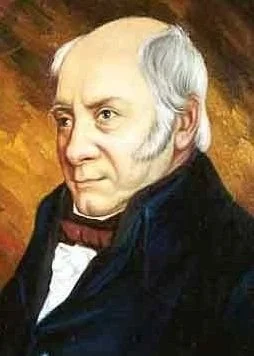William 'Strata' Smith
The Stow hero Britain nearly forgot
A quiz question. Who is the most influential figure in history associated with Stow-on-the-Wold? After a bit of head-scratching, you might answer, “King Charles I,” who reputedly stayed at the King’s Arms. Or you might go out on a limb and guess, “John Wesley, founder of the Methodist movement,” who preached in Stow.
Well, here’s a better candidate you may not even have heard of: William Smith. “Smith,” hardly a name to stick in the memory. But William Smith – called “Strata” Smith - is known as the “Father of English Geology.” He lived in Stow from 1787 to 1791.
His home was the Manor House on the corner of the Square across the road from the police station. And 2015 was a special one – the 200th anniversary of the publication of his geological map of Britain in 1815. Before Smith’s work, no-one had charted the structure of the rock formations beneath our island.
In late July 2015, the Stow and District Civic Society celebrated Smith’s life. Members assembled in the Square - near the plaque unveiled by the Society on Smith’s old residence five years ago - before making the trip to Churchill in Oxfordshire where he was born. Churchill’s Heritage Centre had a graphic display illustrating the great geologist’s life and achievements.
Smith came from humble origins, the son of a blacksmith. He trained as a surveyor and is said to have covered 10,000 miles a year on foot, horse and carriage. He recognised the recurrence of layers of sediment and rock and the unique fossils associated with them, and after 15 years of this research he published his map.
But it took many more years before his contribution to science was recognised. Others copied his map without giving him credit for it. And even the Geological Society didn’t award him their Gold Medal until 16 years after the map’s publication. By this time, Smith himself had been bankrupted and had spent three years in a debtors’ prison.
Today the Geological Society holds an annual William Smith lecture to celebrate his work. And in case you’re in doubt about how influential this Stow resident was, it’s arguable that the Industrial Revolution – fired up on coal and iron – could not have happened without Smith’s map to show where those vital minerals could be mined.




